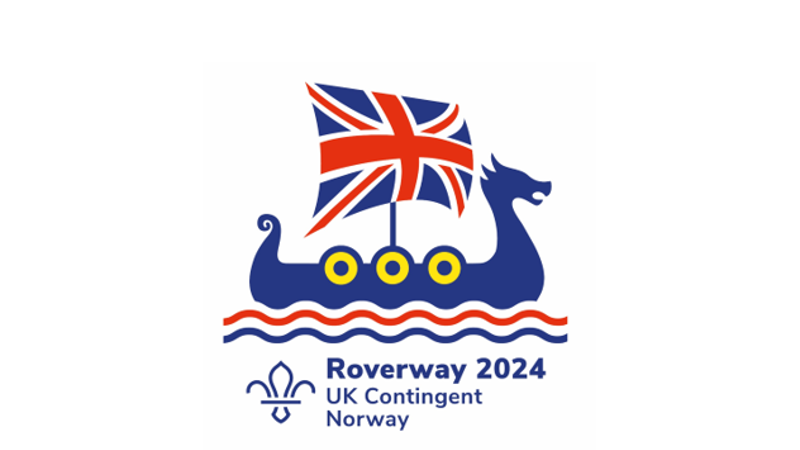
Make an airport obstacle course
You’ll need
- Cones or similar to mark out a slalom
- A suitcase (or similar) for each group
- A backpack (or similar) for each group
- The items listed in the ‘Kit List’ sheet – enough for 1 of each item per group. If needed, the kit list sheet can be printed out and cut up for groups to use paper slips.
- A printout of the security rules
- Three tables
- Three or more trays
Før du begynner (Before you begin)
- Use the safety checklist to help you plan and risk assess your activity. There's also more guidance to help you carry out your risk assessment, including examples. Don’t forget to make sure all young people and adults involved in the activity know how to take part safely.
- Make sure you’ll have enough adult helpers. You may need some parents and carers to help if you’re short on helpers.
Gjør klar denne aktiviteten (Setting up this activity)
- Make sure to print out the attachments ahead of time.
- You’ll need three adults or young leaders to run this activity – one will be the check-in desk, one will be security, and one will time the teams. Parents and carers could take on these roles if needed.
Roverway is a European event for Scouts and Guides aged 16 to 22, which takes place every three to six years. It is a unique event due to its age range and emphasis on youth-led adventure.
The next Roverway will take place in Norway in summer 2024. The event is divided into three parts: a semi-independent expedition, a jamboree-style camp and a post-event experience. Find out more about Roverway 2024.
Norway is a Scandinavian country in Northern Europe that has mountains, glaciers and big bodies of water, which are called fjords. Many Norwegians embrace the nature through outdoor activities such as kayaking, hiking and skiing. Oslo is the capital of Norway.
Lag hinderløypa (Setting up the course)
- Use a table to be the check in desk about a third of the way in the space. The check in desk should be set up so that someone can be behind it. A suitcase (or similar) can be placed next to the desk.
- There should be a zig-zag route leading up to the check in desk, just like an airport queue. This could be done using cones for people to move around.
- After the check in desk, there should be a table or space (the security desk) for groups to sort out their hand luggage. The trays should be placed here for groups to use and the printout of the security rules should be visible.
- There should be another table/area at least 3 m away from the security desk (this will be known as repacking table) and is where groups will repack their luggage.
- At the end of the course, there should be a collection of seats to represent the plane.
La oss leke (Let’s Play)
- Gather everyone together and explain that you’re going to play a game where you pretend to go through the airport.
- Split everyone into teams.
- Teams should complete the course one at a time, with the person running the activity timing each group.
- At the end, everyone can find out which teams completed the task the fastest.
Pakk sekken (Packing the bags)
- Each group should decide what they want to take with them on their trip. You could discuss this as a whole group or in small teams.
- All items on the Kit List should be packed, or marked for throwing away.
- Each group should place their chosen items into either the suitcase and backpack being used.
- If using different containers and a printout of the Kit List, the cut-out items should be placed in the respective containers
- The group should think about what items are allowed in their check-in luggage. They should think about what items they’ll be allowed to take through security in their hand luggage. They should also think about how heavy their suitcase is going to be.
Gjennomfør hinderløypa (Running the course)
- When everyone’s ready, the first team should get ready to go. Everyone else can sit in the airport waiting lounge.
- The three adults or young leaders should get into position by their desks, or to one side if they’re timing – one on the check-in desk, one as security and one timing the teams.
- First, teams need travel to the airport and check in. The team should go through a slalom course to get to the check in desk.
- The person running the desk should ask questions from the ‘Check In Questions sheet’. Once the team has answered 3 questions correctly, they should place their suitcase next to the check in desk and head to security.
- If the team is struggling to work out the answer, they can pass and move onto the next question. The team must answer 3 questions correctly before moving on.
- Next, the team need to go through security. At the security desk, groups should unpack their hand luggage onto the trays according to the ‘Security Rules’.
- The team then needs to get the trays from the security desk to the repacking area. Anyone holding a tray cannot move until they have passed the tray to someone else.
- If anyone drops an item, each member of the team must stand on 1 leg for 30 seconds with their hands on their head, then do heads, shoulders, knees and toes.
- Once everyone gets to the repacking area, the team must pack everything back into their hand luggage.
- Finally, the team needs to board the plane. The team must race to the seats that make up the plane. Each member of the team should say one thing that they would like to do within Scouts in the future. This could be something that could be done during a meeting or something more adventurous, such as going to a Roverway!
- The time stops when every member of the team has said something they’d like to do in the future and is sat on a seat.
- If any items didn’t make it through check in or security, add a 5-second penalty to the team’s time.
At the end
- Once a team is finished, they can return to the airport waiting lounge and the next team can go.
- Remember to write down the times to see which team completed the course the fastest, but you could also reward the team that had the most correct items or good teamwork, resilience and communication!
Reflection
This activity was all about learning the various steps and procedures of an airport in a fun way. Have any of you ever gone through an airport before? How was the activity similar? How did it differ?
If you have never been to an airport before, has this helped you feel more confident in what to expect? Is there anything you are still nervous about?
Allow the young people to share personal stories and feelings to make sure everyone feels prepared and reassured that they can tackle the airport confidently!
Safety
All activities must be safely managed. You must complete a thorough risk assessment and take appropriate steps to reduce risk. Use the safety checklist to help you plan and risk assess your activity. Always get approval for the activity, and have suitable supervision and an InTouch process.
- Active games
The game area should be free of hazards. Explain the rules of the game clearly and have a clear way to communicate that the game must stop when needed. Take a look at our guidance on running active games safely.
- Make sure there’s a role for everyone. If anyone doesn’t want to play the game, they can take on another role, such as scorekeeping or reminding people of the instructions throughout the game.
- People could work in pairs if someone doesn’t want to do the activity independently or if someone may need more support by working together to take part. If someone might struggle with making decisions, their partner could then help them. If needed, let people be in bigger groups to make sure everyone’s supported in taking part in the activity. A young leader could join a group to help people to take part, too.
- People who struggle with making choices could find all the options a bit overwhelming, so they might need extra support. They might want to work with a friend, young leader or volunteer to be able to help to decide.
- Make sure to break information up into smaller 'chunks' so no one feels overwhelmed.
- Take time and have patience while telling everyone what to do. Give short instructions clearly and concisely. If you need to, pause, then repeat the same instruction using the same words. You should allow extra 'thinking' time for some people to process verbal or written information and respond.
- Check for understanding by asking the group questions, such as ‘what do you need to do first?’, or having a practice round of a game. If people are struggling to understand or know what to do, you could let any confident young people help explain to each other what to do.
- For anyone who may not be able to move around your meeting place easily, think about how you set up the obstacle course to meet everyone' needs.
- For anyone who may not be able to hear the instructions or activity, consider printing them a version that they can read at the same time.
- Remember some people, including autistic people, might not look at you while you’re speaking. This doesn’t mean they're not listening. Eye contact can be painful for some people and shouldn't be forced.
- Try to build movement breaks into your activities to help people who may struggling sitting and listening for long periods.
All Scout activities should be inclusive and accessible.
Take a look at our other Roverway 2024 Activities.
Allow space for the young people who have first-hand experiences of an airport to share.


